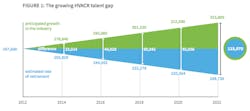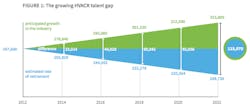Like many Baby Boomers, I went off to college 30 years ago thinking that that was the path I was supposed to be on, the opportunity for which my parents (See ‘Greatest Generation’) had sacrificed, and the only guaranteed key to unlocking the American Dream. And for the most part, despite myriad plot twists along the way, that plan worked, at least for me.
But today, those best laid plans have changed, multiplied really. Increasingly, college is no longer seen as the only way forward, the truest measure of generational progress (“so-and-so was the first in his family to go to college”). Now, it is just one option, and an extraordinarily expensive one at that. And the unending waves of liberal arts majors (like me), lawyers (me, again) and MBAs over the last 40-plus years have upended our society in ways only a few had foreseen. Of course, while higher education remains right and even necessary for many —after all, who wants a home-schooled physician or pilot?— the stigma has lifted. There is a crushing, growing need for able hands that can build, operate, and maintain our tangible future.
The demand is especially strong in the construction trades, particularly in the HVACR sector. According to the most recent Bureau of Labor Statistics (BLS) report, updated in April:
Employment of heating, air conditioning, and refrigeration mechanics and installers is projected to grow 15 percent from 2016 to 2026, much faster than the average for all occupations. Commercial and residential building construction is expected to drive employment growth, and job opportunities for HVACR technicians are expected to be good.
In 2015, the nonprofit HVACR Workforce Development Foundation published three interrelated reports on our industry’s widening talent gap, exponential technology growth, and dire need for accelerated recruitment. Writing with urgency, the Foundation stressed, “There are too many empty seats in HVACR classrooms, community and vocational colleges are not training enough students, there is no clear credentialing or accreditation programs, schools are losing half of their instructors to retirement, incoming students are unprepared for the program, recruitment practices are lacking, and more women and minorities are needed in the profession.”
Indeed, at the same time, the Social Security Administration has estimated that 22 percent of the U.S. workforce of HVACR mechanics and installers will retire by 2022. That’s less than four years away!
So now is the time for all of us to spread the word and be more proactive. Visit your local high schools, see what trade programs are in place, and offer to come speak. Exhibit at local Career Days, sponsor internships if you can. I know many of you are already doing this, but today we are in an “all hands on deck” situation that simply demands more. As Scott Lynch, CEO of the American Boiler Manufacturers Association, wrote in our June issue, “We need to do a better job of telling our stories.”
True. But first, we also have to make more of an effort to go and find our audience.
For more Editor's Notes, visit the HPAC Engineering archives here.
About the Author
Rob McManamy
Editor in Chief
An industry reporter and editor since 1987, McManamy joined HPAC Engineering in September 2017, after three years with BuiltWorlds.com, a Chicago-based media startup focused on tech innovation in the built environment. He has been covering design and construction issues for more than 30 years, having started at Engineering News-Record (ENR) in New York, before becoming its Midwest Bureau Chief in 1990. In 1998, McManamy was named Editor-in-Chief of Design-Build magazine, where he served for four years. He subsequently worked as an editor and freelance writer for Building Design + Construction and Public Works magazines.
A native of Bronx, NY, he is a graduate of both the University of Virginia, and The John Marshall Law School in Chicago.
Contact him at [email protected].


